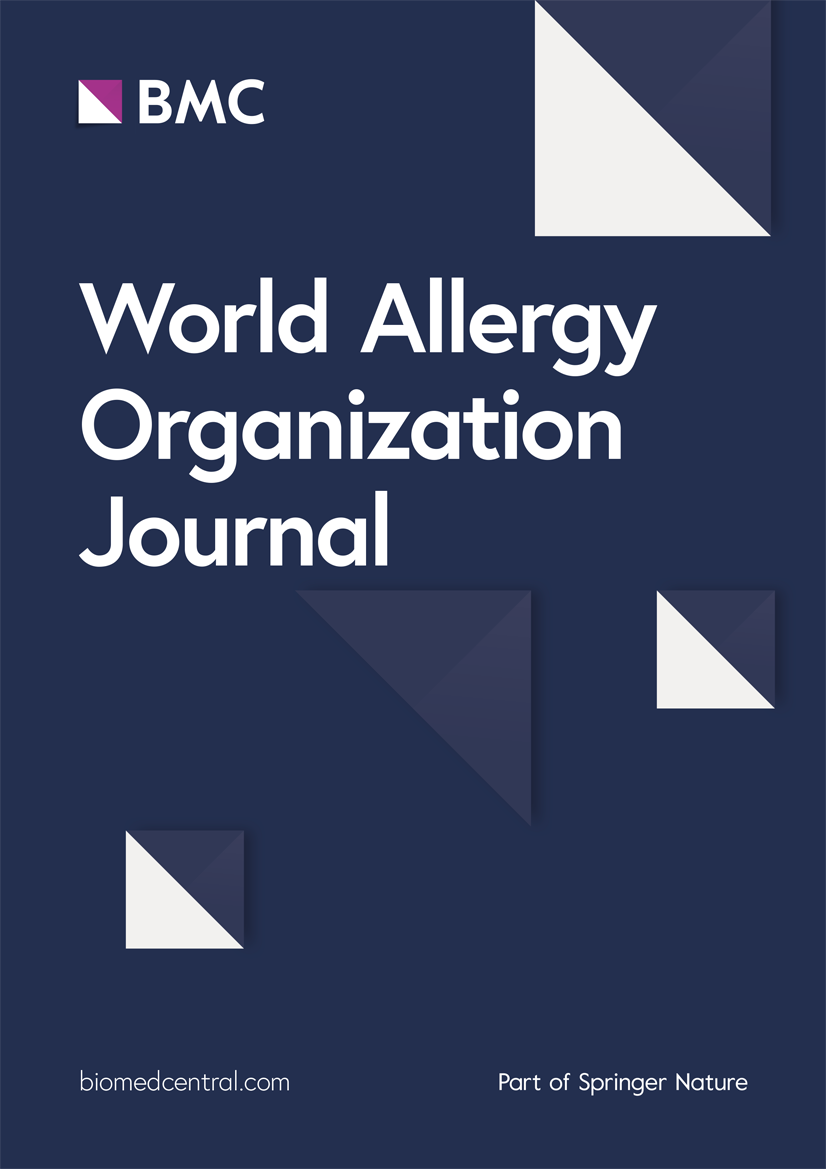Clinical profile, prevalence, and burden of chronic spontaneous urticaria in the United States
IF 4.3
2区 医学
Q2 ALLERGY
引用次数: 0
Abstract
Background
Data on the prevalence and burden of chronic spontaneous urticaria (CSU) are limited in the United States (US).
Objective
To estimate the burden, clinical profile, and prevalence of diagnosed CSU in the United States.
Methods
Data from respondents with physician-diagnosed CSU were collected from the 2019 National Health and Wellness Survey (NHWS). Outcomes assessed included diagnosed CSU prevalence, demographics, clinical profile, and burden using the 36-item Short Form Survey version 2 (SF-36v2; physical and mental component summary [PCS and MCS] scores), Short-Form 6 Dimension (SF-6D) and EuroQol-5 Dimension (EQ-5D) utility scores, Dermatology Life Quality Index (DLQI), Patient Health Questionnaire-9 (PHQ-9), General Anxiety Disorder-7 (GAD-7), Work Productivity and Activity Impairment (WPAI) questionnaire, and healthcare resource utilization over the past 6 months.
Results
Among 74,994 respondents, 815 reported physician-diagnosed chronic urticaria, with 635 (77.9%) having CSU. The weighted prevalence (95% confidence interval) of diagnosed CSU was 0.78% (0.78%–0.78%). The mean (standard deviation [SD]) age at diagnosis was 37.0 (17.1) years, and 51.7% of respondents were female. Lower (worse) MCS and PCS scores were observed than in the overall NHWS population. The mean (SD) SF-6D and EQ-5D health utility scores were 0.54 (0.14) and 0.62 (0.34), respectively. The mean (SD) DLQI score was 13.8 (11.2), with more than 74.0% of respondents reporting anxiety (GAD-7 ≥5) and depression (PHQ-9 ≥5). Mean percent (SD) scores for absenteeism, presenteeism, overall work impairment, and activity impairment were 36.5% (26.1), 67.2% (34.9), 73.1% (34.2), and 62.6% (34.1), respectively. The percentage of patients visiting any healthcare provider, an emergency department, or requiring hospitalization was 96.5%, 60.2%, and 55.9%, respectively.
Conclusion
This real-world study reveals a higher prevalence of diagnosed CSU in the United States than previously reported, along with significant humanistic and economic burdens.
美国慢性自发性荨麻疹的临床概况、患病率和负担
背景:在美国,关于慢性自发性荨麻疹(CSU)的患病率和负担的数据有限。目的评估美国诊断的CSU的负担、临床概况和患病率。方法从2019年国家健康与健康调查(NHWS)中收集医生诊断的CSU受访者的数据。评估的结果包括诊断的CSU患病率、人口统计学、临床概况和负担,使用36项简短表格调查版本2 (SF-36v2;体质和心理成分总结[PCS和MCS]评分)、短表6维度(SF-6D)和EuroQol-5维度(EQ-5D)效用评分、皮肤病生活质量指数(DLQI)、患者健康问卷-9 (PHQ-9)、一般焦虑障碍-7 (GAD-7)、工作效率和活动障碍(WPAI)问卷,以及过去6个月的医疗资源利用情况。结果在74,994名受访者中,815名报告了医生诊断的慢性荨麻疹,其中635名(77.9%)患有CSU。诊断为CSU的加权患病率(95%可信区间)为0.78%(0.78% ~ 0.78%)。诊断时的平均(标准差[SD])年龄为37.0(17.1)岁,51.7%的受访者为女性。MCS和PCS得分较低(较差)。SF-6D和EQ-5D健康效用得分均值(SD)分别为0.54(0.14)和0.62(0.34)。平均(SD) DLQI评分为13.8(11.2),超过74.0%的受访者报告焦虑(GAD-7≥5)和抑郁(PHQ-9≥5)。旷工、出勤、整体工作障碍和活动障碍的平均百分比(SD)分别为36.5%(26.1)、67.2%(34.9)、73.1%(34.2)和62.6%(34.1)。访问任何医疗保健提供者、急诊科或需要住院的患者比例分别为96.5%、60.2%和55.9%。结论:这项现实世界的研究表明,美国诊断的CSU患病率高于之前的报道,同时也带来了重大的人文和经济负担。
本文章由计算机程序翻译,如有差异,请以英文原文为准。
求助全文
约1分钟内获得全文
求助全文
来源期刊

World Allergy Organization Journal
Immunology and Microbiology-Immunology
CiteScore
9.10
自引率
5.90%
发文量
91
审稿时长
9 weeks
期刊介绍:
The official pubication of the World Allergy Organization, the World Allergy Organization Journal (WAOjournal) publishes original mechanistic, translational, and clinical research on the topics of allergy, asthma, anaphylaxis, and clincial immunology, as well as reviews, guidelines, and position papers that contribute to the improvement of patient care. WAOjournal publishes research on the growth of allergy prevalence within the scope of single countries, country comparisons, and practical global issues and regulations, or threats to the allergy specialty. The Journal invites the submissions of all authors interested in publishing on current global problems in allergy, asthma, anaphylaxis, and immunology. Of particular interest are the immunological consequences of climate change and the subsequent systematic transformations in food habits and their consequences for the allergy/immunology discipline.
 求助内容:
求助内容: 应助结果提醒方式:
应助结果提醒方式:


